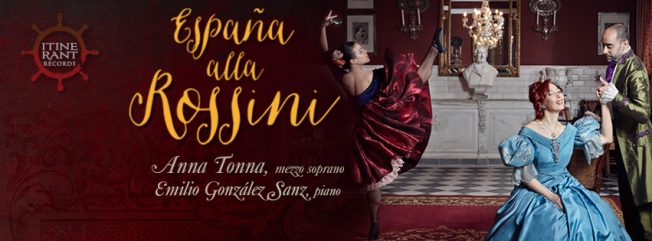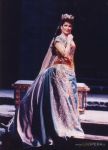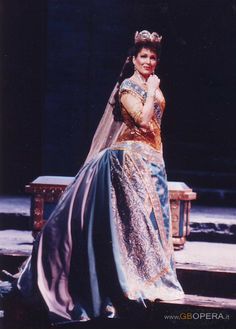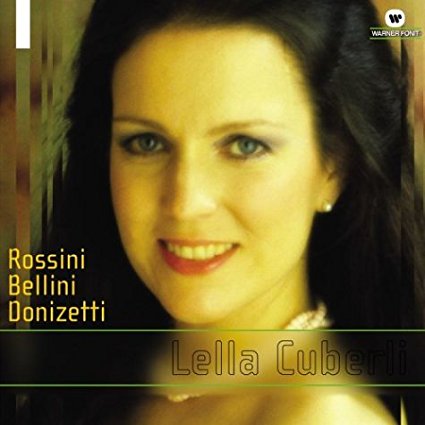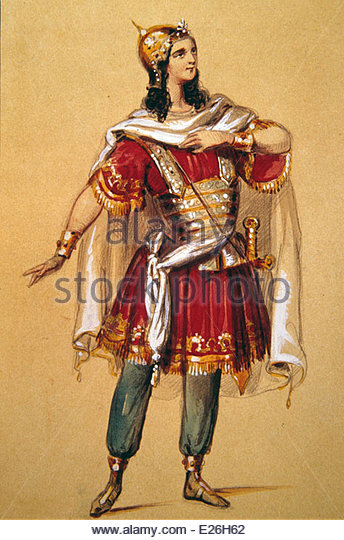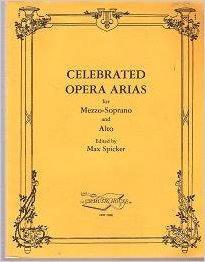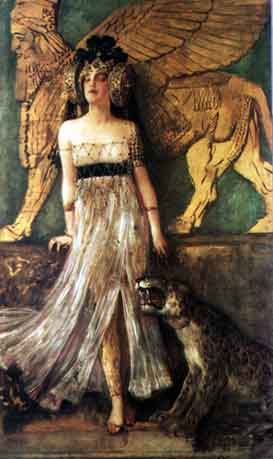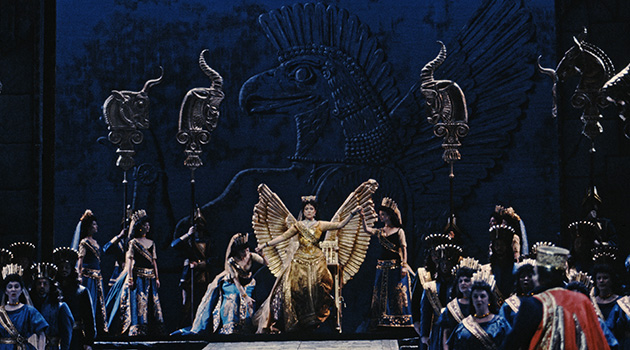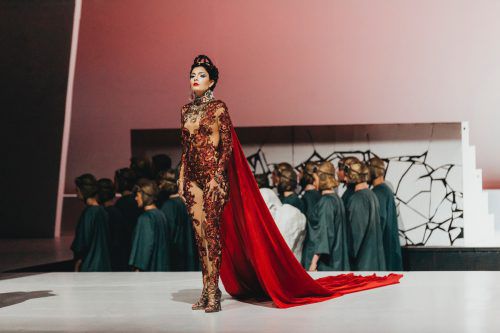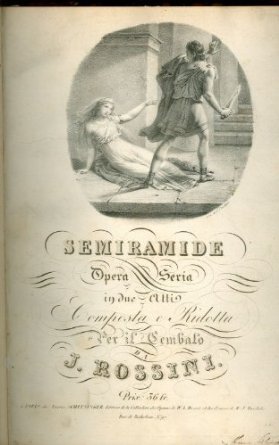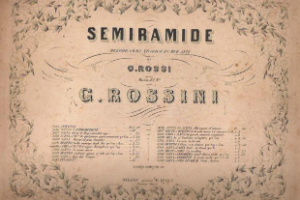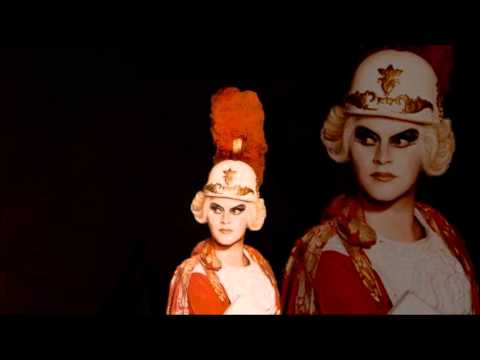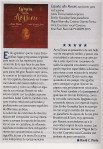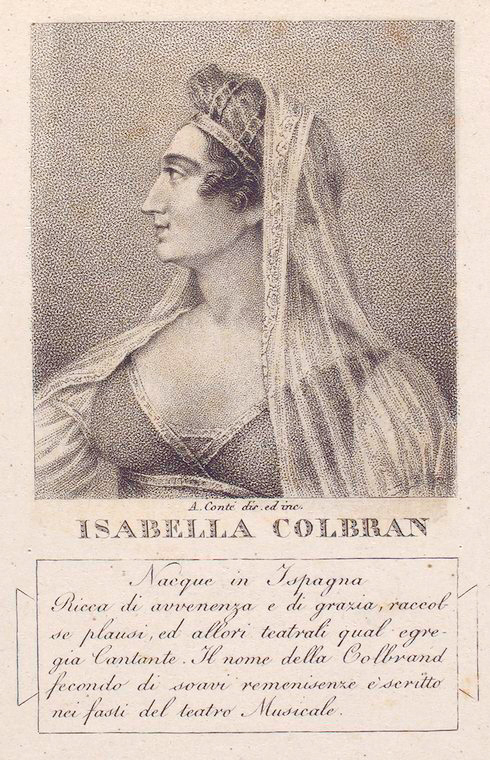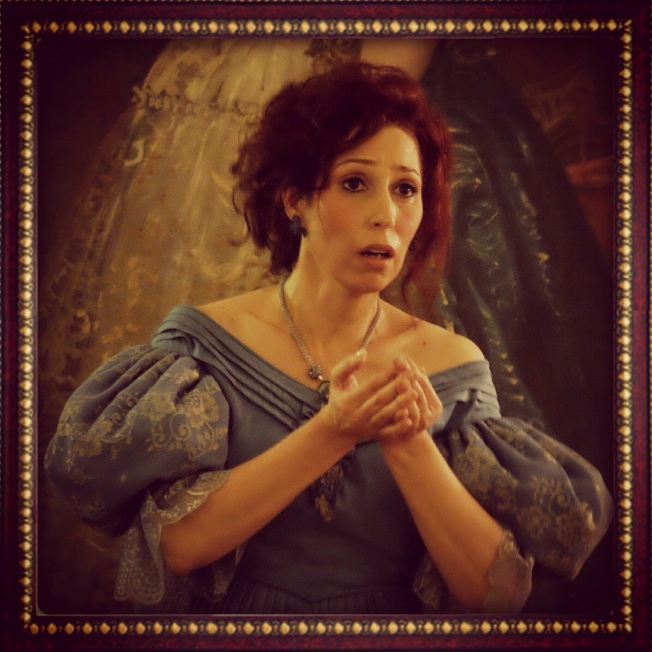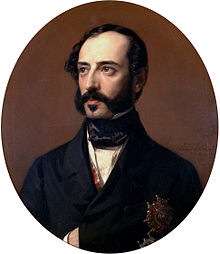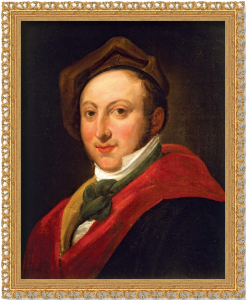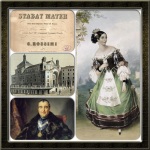
With the Rossini celebration of the 150 years since the death of composer Gioachino Rossini being celebrated this year, works by the “Swan of Pesaro” are being programmed world wide. This year I’m involved in several projects having to do with Rossini, namely “Verdi, Bianco, Rossini!” with pianoforte/romantic guitar ensemble Duo Savigni in Italy as well as a production of his La cambiale di matrimonio for Little Opera Zamora in Spain. Tomorrow I take part in his Stabat mater in the city of Chicago, as part of the 2018 Chicago Oratorio Award – The American Prize this coming Wednesday May 16th. Always a privilege to sing this great work for chorus orchestra and soloists, I take the occasion today to highlight how the Stabat mater is related to Spain, and the reason it forms part of the commercial disc España alla Rossini, which I recorded and released in 2015 with pianist Emilio González Sanz on Emilio’s circa 1890 Broadwood piano for iTinerant Classics:
From the program notes in the disc España alla Rossini, by Spanish musicologist José Luis Téllez, which I translate into English:
“In his ‘charm offensive’ meant to assert his financial claims, Rossini did not forget the Queen: “Specially for Her Majesty Maria Cristina di Borbone, Catholic Queen of Spain, in Madrid on 20 February, 1831” he composed La passeggiata, which was published on 11 April, 1831 in the Spanish magazine «Cartas Españolas», later also by Ricordi. In Italian poetics the subtitle “Anacreontica” indicates a piece of poetry consisting of heptasyllabic or octosyllabic lines, dedicated to love, wine or joie de vivre. Rossini’s piece is not full of unbridled singing though but rather a contemplative ode to the beauty of nature. “La passeggiata – Anacreontica” must not be mistaken for “La passeggiata – Quartettino” from the “Album italiano” of his “Péchés de vieillesse”.
However, the most important aspect of his trip to Spain is the “by-product” of the Stabat mater; which he had promised Manuel Fernández Varela, prelate and commissar of the Cruzada on the day before his departure (23 February, 1831). First Rossini went back on his word and he did not set himself to work before March 1832 after the clergyman had urged him. To finish this composition destined for Good Friday in time he felt compelled to appeal to his friend Giovanni Tadolini for help. Rossini entrusted him with nearly all the solo pieces and the closing fugue (7 numbers), while he took care of the other 6 numbers himself: all ensemble pieces and just one solo aria, namely the cavatina (No. 10) “Fac ut portem” for contralto, the singing voice he had always considered most important. Due to the quarantine because of cholera this thirteen-piece composition reached Madrid only after Good Friday 1832 and therefore was not premiered until the Good Friday of the following year, on 5 April, 1833 in the church of San Felipe El Real. When the Varela manuscript got to Paris in 1841 Rossini obstructed publication and substituted the seven pieces by Tadolini with four of his own; as a result “Fac ut portem” is number 8 in the version of the Stabat mater as we know it today”.
Tile image: First edition of the Rossini Stabat mater; engraving of the church where the first version of the work was premiered San Felipe El Real in Madrid; portrait of Manuel Fernández Varela, Spanish cleric who commissioned the Stabat mater; portrait of mezzo Emma Albertozzi, first Italian mezzo interpreter of the Rossini Stabat mater.
